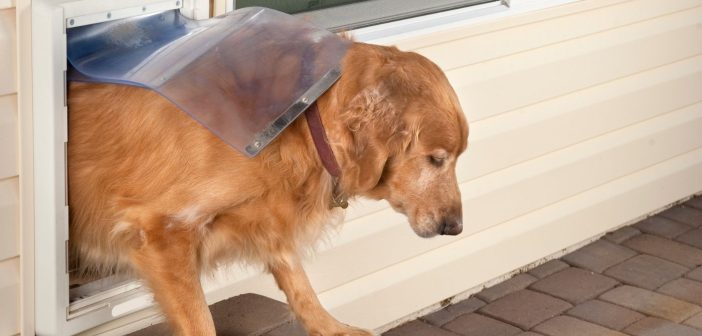No matter where they live, many homeowners spend a lot of money regulating the temperature of their homes throughout the year. Many of those same homeowners also own pets and allow their pets to go in and out of the home through pet doors. These pet doors lead to the outside and, if not sealed properly, can let out a lot of temperature-regulated air. As a result, your home has to use more energy to keep at your desired temperature and even more so if that door sees a lot of traffic.
While doggy doors have many benefits that keep your dogs healthy and happy, as reviewed in this article, that doggy-door freedom may be costing you a lot of money. But don’t worry—that doesn’t mean you have to get rid of your pet door. Here’s how you can keep your doggy door from wasting electricity.
Fill in Seals
The first step you want to take is to caulk any and all holes or gaps around the frame of the door. The last thing you want to do is to spend time and money upgrading your pet door only for it to still be leaking air. This step comes with the added bonus of winter-proofing your pet door. Just make sure to remember to do both sides of the door, not just the inside. For further insulation, you can install weatherstripping around the frame, which is guaranteed to be weather resistant.
Add Another Flap
One of the main reasons why air escapes through a pet door is because it doesn’t close all the way every time. Adding an extra rubber flap can help keep in the air, and the flap is guaranteed to bounce back closed every time. These flaps are also great for shedding water and keeping cold air out. You can also add plastic door strips to keep out water and snow and add an extra layer of protection.
Use Magnetic Latches
Magnetic latches can also solve the problem of a doggy door not closing all the way. If a door is almost closed, the magnetic lathes will snap it shut automatically, ensuring you’re not losing regulated air. You can buy magnetic doggy doors or install magnetic strips yourself just as easily. You can add these magnets to the main door or any extra flaps that you install.
Keeping your doggy door from wasting electricity is easy once you know what to do. So whether you’re a DIYer or you buy your doggy door from the pet store, keep these few steps in mind. That way, you’ll ensure that you’re installing the best option for you and your pet.




